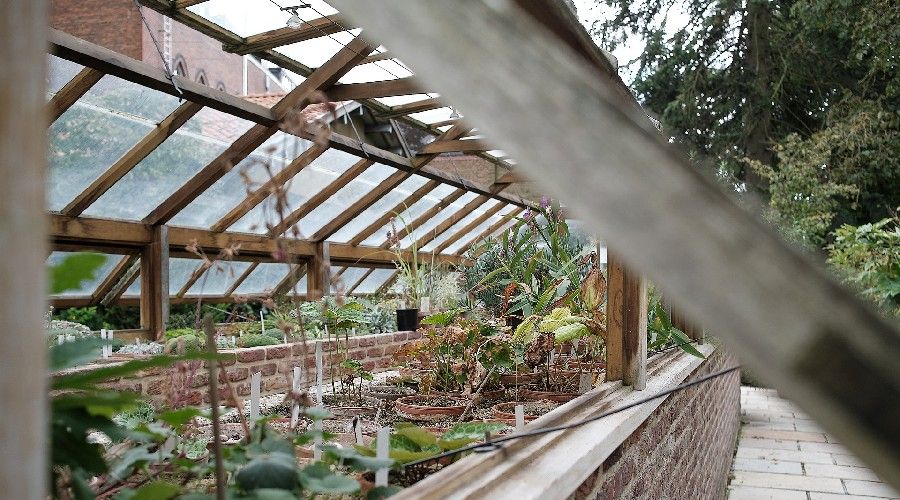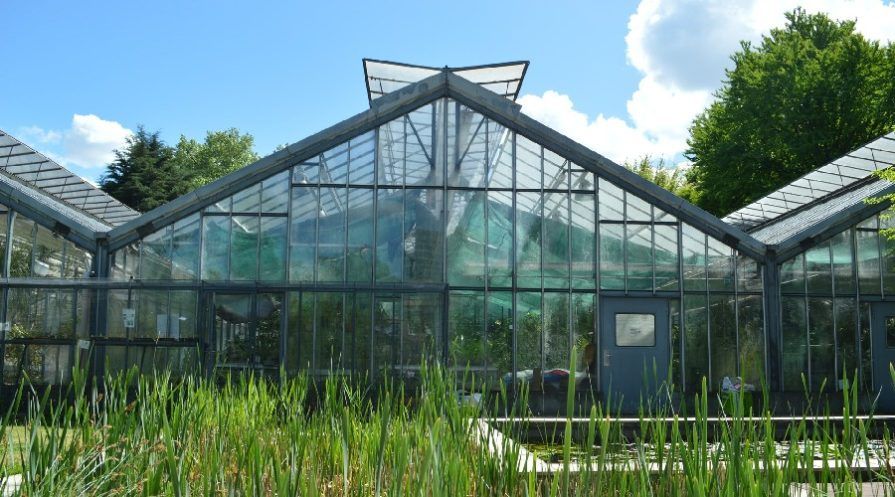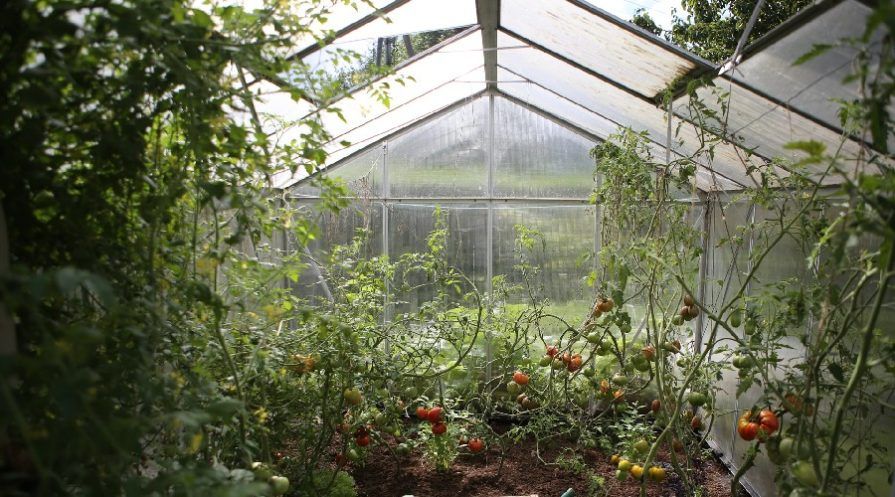In the past, greenhouses had glass panels – and that was pretty much your only choice for greenhouse materials unless you built it yourself. But now there are more options why you may wish to consider before purchasing or installing a greenhouse. Traditional glass greenhouse options have many advantages, but polycarbonate panels on greenhouses do as well.
It’s a tough decision, but hopefully, this little walk-through of the pros and cons will help you get there. Doing the research certainly helped me figure out which would be better for my ultimate plans for a greenhouse. Also, make sure to check our list of the best greenhouse kits!
Glass Greenhouses
Image credits: Fent Jani via Unsplash
There are many pros for a glass greenhouse that are worth considering before you purchase. First off, glass greenhouses are exceptionally durable and the glass panels are easy to replace if and when they need to be repaired.
A classic greenhouse also tends to be the most attractive option for greenhouses. There's no discoloration or cloudiness in glass, while other materials develop this over time. Glass greenhouses also come in a wide range of beautiful styles, too, or you can build your own ultra-green greenhouse by acquiring old windows and creating your own design while also keeping more items out of landfills. They also transmit 100% of the sunlight because of the clarity of glass over other materials.
Glass greenhouses are also flame-resistant, so they're safe to build near areas where you may host barbecues and similar events. Additionally, glass requires no chemicals to make, so the materials are the greener option for building a greenhouse.
Of course, with every good thing, there are some downsides. Glass greenhouses aren't very good at diffusing heat, so often plants get scorched if they're not provided with some shade inside the greenhouse. The initial cost of a glass greenhouse is also more expensive than that of a polycarbonate kit and overall your heating and cooling costs will go up because of the lack of insulation with glass. Glass greenhouses are also more difficult to put together and have parts that may break as you build them or overtime when tree branches fall or foul weather hits.
- Durable
- Attractive
- Easy to replace parts
- More eco-friendly
- Flame-resistant
- More expensive initially
- No heat diffusion
- Heating and cooling expenses
- Difficult to put together
- Glass may break
|
|
Polycarbonate Greenhouses
Image credits: Zanda Photography via Unsplash
Polycarbonate greenhouses have some strong advantages over glass greenhouses, as well, though, so it’s definitely worth considering these points before buying. For one, polycarbonate greenhouses have the ability to be both flexible and rigid, making them a durable option you can easily install in more awkward places around the yard. They also provide your plants with UV protection but still transmit 88% of the natural light they crave. This light diffusion and UV protection can also extend your growing season and protects your plants from overheating.
Polycarbonate panels on greenhouses also weigh a lot less than glass ones, so they're easier to install and move around if need be. They provide your plants with more insulation than glass and overall are less expensive to build. The premade kits also come in a range of sizes, shapes, and unique greenhouse design choices, making them a great fit for most spaces.
As with glass greenhouses, there are some downsides as well to polycarbonate options. Polycarbonate is made from chemicals, making them a not so environmental-friendly option. Additionally, they don't tend to look as good, due to the discoloration that occurs after time, their vulnerability to scratches, and the general consensus that polycarbonate simply isn't as attractive as clear, sparkling glass. Polycarbonate panels also collect condensation, which can cause issues for low-moisture plants.
- Flexible yet rigid for durability
- Easier to put together
- Less expensive
- Some light diffusion
- UV protection
- Not as attractive
- Discoloration may occur
- Condensation
- Prone to scratching
- Made from chemicals
|
|
How to Decide Which is Best for You
Ultimately, your decision on a glass greenhouse or polycarbonate is a personal preference and also what best suits your space. For a more environmental-friendly option with a lot of yard space, you'll likely enjoy the attractive look of a glass greenhouse. However, for smaller yards, a polycarbonate greenhouse may be a better option. While both options have a range of pros and cons, a greenhouse is a great way to have a longer growing season.



